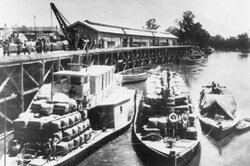 From the 1870s fleets of paddle steamers laden with bales of wool began to wind their way down the famous Darling River. Wool transportation was at the core of river trade at this time, a sign of the flourishing wool industry in Australia and a good example of the large quantities of wool being exported from rural Australian sheep stations in the late 1800s and early 1900s.
From the 1870s fleets of paddle steamers laden with bales of wool began to wind their way down the famous Darling River. Wool transportation was at the core of river trade at this time, a sign of the flourishing wool industry in Australia and a good example of the large quantities of wool being exported from rural Australian sheep stations in the late 1800s and early 1900s.
Tolarno Station, in western New South Wales, was one of the most successful stations using the Darling River to transport wool. William and Ross Ried named the property in 1851, and further developed it into a thriving station over the next 40 years or so. Like many of the woolsheds I’ve spoken about in the past few months, a small township developed around Tolarno Station, including schools, houses, offices, stables, a jail, a blacksmith, chaff stores, a saddlers shop, gardens to feed the community and even 3 hotels. Tolarno Station soon became a town in itself.
Shearers toiled hard, all year round, 6-days a week in the 100-stand shearing shed that was built from local timber and iron. It was built conveniently close to the banks of the river, to make it easier to load wool bales onto the fleet of 12 paddle steamers that the Reid family operated from the property.
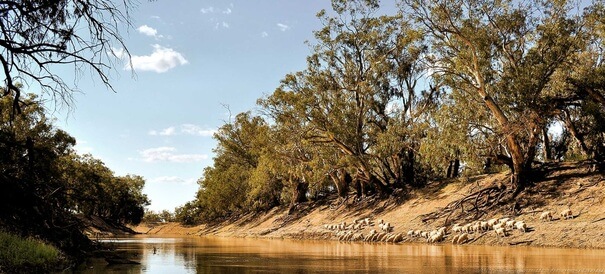 With its large scale operation Tolarno Station soon became a big player in the wool industry, with approximately 1,100,000 acres of land, running over 330,000 sheep. But when the Union Bank of Australia collapsed, the Reid family had to sell the station to Benjamin Chaffey, who owned the property until 1911.
With its large scale operation Tolarno Station soon became a big player in the wool industry, with approximately 1,100,000 acres of land, running over 330,000 sheep. But when the Union Bank of Australia collapsed, the Reid family had to sell the station to Benjamin Chaffey, who owned the property until 1911.
In 1884, under Chaffey’s ownership, a shearer’s strike took place, fighting the reduction of shearing salaries that was caused by the drop in wool prices. To keep the woolshed operating, Chaffey brought in 50 non-union shearers, but while they were on the Rodney paddle steamer, Tolarno shearers attacked them and eventually set the boat on fire. It is the only inland act of piracy every recorded in Australia and definitely something for the history books.
Some documents and anecdotal evidence link this area to the origin of Banjo Paterson’s Waltzing Matilda. However the incident took place during the great shearers strike with Banjo’s famous song said to have been penned after Samuel ‘Frenchy’ Hoffmeister was found shot dead after a gang of rebel shearers conducted a raid on the Dagwood Woolshed, in Queensland. Next week we uncover the origins of Waltzing Matilda.


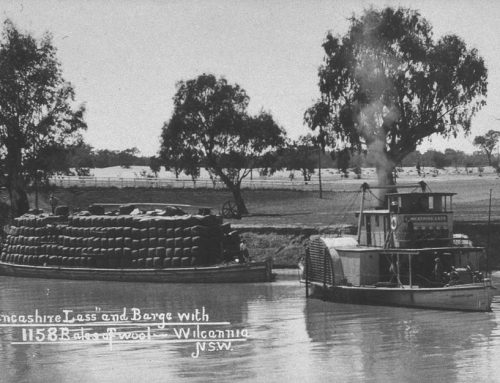

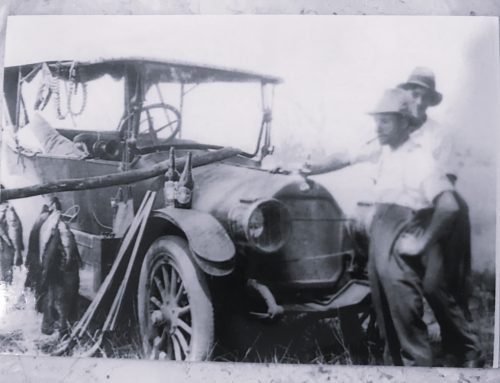
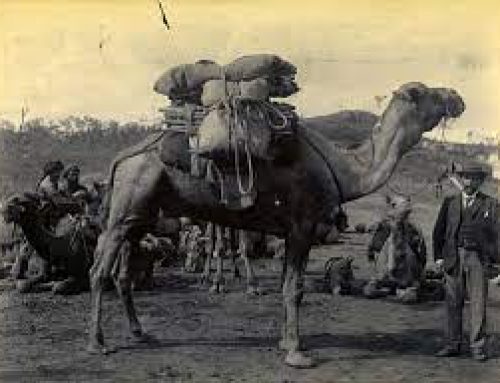
Well done Nicole